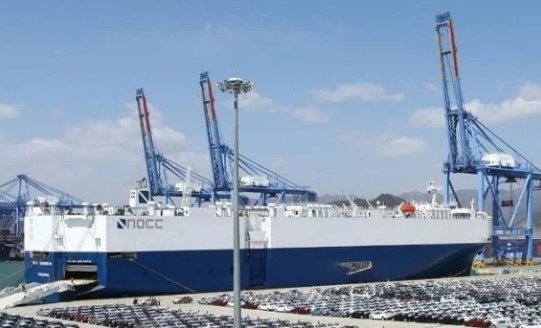
Institutional investors advised by J.P. Morgan acquired Norwegian Car Carriers buying the shares held by Norway’s Klaveness Marine. The investment comes as the car carrier and vehicle transport marketing is surging due to growth in the car markets and a lack of transport capacity that is expected to last for several years.
Formed in 2010 through the merger of two predecessors in the transport sector, Norwegian Car Carriers through its heritage reports to have been the first to build and operate a purpose-built roll-on roll-off carrier in 1964. The company was acquired by Klaveness Marine in 2014 along with a J.P. Morgan Global Maritime Investment Fund.
The institutional investors advised by J.P. Morgan Global Alternative’s Global Transportation Group have now acquired the 50 percent interest in the company from Klaveness Marine. At the same time, they purchased the minority shares in the NOCC Atlantic, one of the company’s three car carriers, built in 2009 with a capacity of 6,754 units. The investors are now the sole owners of Norwegian Car Carriers and the NOCC Atlantic as well as the company’s other two vessels.
“NOCC and its predecessor firms have a storied history in the car carrier segment and with our sponsorship, can continue to be a key tonnage provider to the industry,” said Andrian Dacy, Global Head of Transportation for J.P. Morgan Alternatives. “We believe NOCC is well positioned to help its clients meet the challenges of today’s market.”
The company’s business strategy is to grow as a tonnage provider to global and regional car carrier operators by growing its fleet of large, flexible, and high-quality car carriers. NOCC currently has a fleet of three Panamax-size Pure Car Truck Carriers (about 6,500 ceu capacity) all operating on long-term charters.
Car carriers are currently in strong demand as the auto industry rebounds from the delays during the pandemic and increased consumer demand. Orders for the vessels lagged for over five years and only recently have begun to rebound with a near-term shortage expects until the delivery of the new orders begin to reach the market. Analysts project that the shortage in capacity and high demand for vessels will continue at least until 2025.
DNV’s recent segment review showed that after a five-year lull in new orders, the pure car and truck carrier (PCTC) segment began to rebound in 2021 when 38 newbuilds were ordered. Nearly all the vessels are being built in China. The number of others nearly tripled in 2022 to 90 vessels with the size and sophistication of the vessels also increasing.
Major carriers such as Hyundai Glovis and Grimaldi have announced large investments in new tonnage with other leaders in the segment expected to follow. The lack of capacity has also prompted car manufacturers to announce plans to build ships. Anji Logistics, which reports it is the largest automobile transportation company in China, recently reported a 25 percent increase in the number of cars transported with plans by its parent company SAIC Motor to invest in further fleet expansion.
Follow us on Facebook/ twitter















